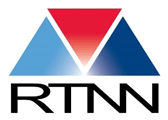The RTNN brings together comprehensive shared user facilities and over 100 complementary faculty research programs at the three major research universities within the network. RTNN technical capabilities span nanofabrication and nano-characterization of traditional hard, dry materials (e.g., 2D and 3D nanomaterials, metamaterials, photonics, and heterogeneous integration) and emerging soft, wet materials (e.g., tissue, textile, plant, and animal nanomaterials).
The RTNN connects you with expert technical staff and faculty to provide:
- Training for users to independently operate equipment.
- Fabrication and analytical services.
- Consultation, collaboration, and support for process and instrumentation development.
- In-person and web-based workshops and interactive demonstrations on state-of-the-art techniques within the network.
Contact the our staff at rtnanonetwork@ncsu.edu to discuss how RTNN can help you.
RTNN technical facilities offer a diverse set of capabilities to its users, including:
Nanofabrication & Cleanroom Capabilities
Class 100 & 1000 Cleanroom Facilities
Lithography Tools
Photolithography: mask aligners, spin coating & developing systems, plasma asher, high-volume patterning system
E-beam Lithography Systems (with integrated SEM capability)
Thermoplastic Nano-Imprinter
Molecular Printer
Laser Ablation System
Ion Beam Lithography
Deposition Tools
Atomic Layer Deposition Chambers (including plasma-enhanced & ozone-enhanced)
Chemical Vapor Deposition Chambers (low-pressure & plasma-enhanced for a-Si, SiO2, Si3N4, TEOS oxide)
Physical Vapor Deposition Chambers (RF dielectric & DC sputtering systems, e-beam & thermal evaporators, pulsed laser systems)
Ion Beam-Assisted Deposition
Electroplater (Cu, Ni, Au)
Etching Tools
Reactive Ion Etching Systems (with Ar, O2, H2, SF6, CHF3, Cl, HBr, BCl3, CF4 gases & RF plasma etch tools)
Deep Reactive Ion Etching Systems (with O2, SF6, CF4, C4F8 gases)
Chemical Etch Stations
Thermal Processing Tools
High Temperature Annealing Furnaces (n-type & p-type doping, dry & wet oxidation, high temperature & rapid thermal annealing)
Baking ovens
Bio-Processing Bay
(for integration of biomaterials with devices)
Wet Processing Bays
Nano-Fiber Production
Electrospinning (Needle/Syringe, High-throughput Edge/Bowl)
Centrifugal Spinning
Multicomponent Extrusion (Bi-co, Tri-co)
Metrology Tools
Ellipsometer
Interferometers
Reflectometers
Refractometer
Atomic Force Microscope
Profilometers
Optical and Confocal Microscopes
Materials Characterization Techniques
Imaging
Scanning Electron Microscopy (SEM)
Field Emission SEM (FE-SEM)
Environmental SEM (ESEM) (including environmental FE-SEM)
Cryogenic SEM (with cold knife fracture, magnetron sputter coater, anti-contaminator, and RGB cathodoluminescence imaging)
Extreme Resolution SEM (XR-SEM) (with transmission detector, concentric backscatter detector, and stage biasing for insulating samples)
Focused Ion Beam (FIB) Milling (with gas injection system for insulator (TEOS), Pt, and W deposition and insulator enhanced etching)
Energy-Dispersive X-ray Spectroscopy (EDS) (on FE-SEM, ESEM, XR-SEM, and FIB microscopes)
Electron Backscatter Diffraction (EBSD) (on FIB/FE-SEM microscope)
in situ Analysis (heating, cooling, electrical biasing, mechanical loading)
Transmission Electron Microscopy (TEM)
Conventional & High Resolution TEM with EDS
Aberration-Corrected Scanning TEM (STEM) with Atomic-Resolution Chemical Mapping (both EDS and Electron Energy Loss Spectroscopy (EELS))
Cryogenic TEM
3D Electron Tomography
in situ Analysis (heating, electrical biasing, liquid cell)
High Resolution X-Ray Computed Tomography (microCT & nanoCT)
High Resolution X-Ray Fluorescence Microscopy (HR-micro-XRF)
In partnership with European Centre of Research and Teaching of Geosciences of the Environment (CEREGE) at Aix-Marseille University
Neutron Imaging
Neutron Radiography
3D Neutron Tomography
Optical Microscopy
High Magnification Optical Microscopy
Micro-spectrophotometry (UV-Vis-NIR & Raman)
Confocal Microscopy (including fluorescence imaging)
Structural & Defect Analysis
X-Ray Diffraction (XRD)
Bragg-Brentano & Parallel Beam Geometries (with Eulerian cradle attachments)
Grazing Incidence XRD (GIXRD)
General Area Detector Diffraction System (GADDS)
in situ Analysis (heating & cooling, vacuum, inert & reactive gases, electrical biasing)
X-Ray Reflectometry (XRR)
Small Angle X-Ray Scattering (SAXS)
Neutron Diffraction
High Resolution Nuclear Magnetic Resonance (NMR) Spectroscopy
Fourier Transform Infrared (FTIR) Spectroscopy
Raman Spectroscopy
Positron Annihilation Lifetime Spectroscopy
Na-22 Bulk Analysis
Intense Positron Beam Surface-Sensitive Analysis
Doppler Broadening Spectroscopy
Surface Analysis
X-Ray Photoemission Spectroscopy (XPS)
Spot Analysis & Mapping
Ultraviolet Photoemission Spectroscopy (UPS)
Time-of-Flight Secondary Ion Mass Spectrometry (TOF-SIMS)
Scanning Probe Microscopy (SPM)
Atomic Force Microscopy (AFM)
Magnetic Force Microscopy (MFM)
Electrostatic Force Microscopy (EFM)
Conductive AFM / Current-Voltage Spectroscopy
Force-Distance Spectroscopy
Nanolithography & Nano-manipulation
Simultaneous Optical Microscopy
Chemical Analysis
Chromatography
Ion Chromatography (IC)
High Performance Liquid Chromatography (HPLC)
Gas Chromatography Time-of-Flight Mass Spectrometry (GC-TOFMS)
Pyrolysis GC-TOFMS
Spectroscopy
Ultraviolet-Visible (UV-Vis) Spectrophotometry
Near Infrared (NIR) Spectroscopy
Raman Spectroscopy
Thermal Analysis
Thermogravimetric analysis (TGA)
Differential Scanning Calorimetry (DSC)
BET Surface Area / Physisorption Analysis
Specimen Preparation
Centrifuges
Incubator shakers
Soxhlet extraction units
Biosafety hood
Autoclaves
Property Characterization
Nanoindentation
Ultraviolet-Visible-Near Infrared (UV-Vis-NIR) Spectrophotometry
Micro-Strain Analysis
Dynamic Mechanical Analysis
Four Probe Electrical Testing
Seebeck/Thermal Conductivity Testing
Shielded RF Anechoic Chamber Antenna & Electrical Testing
Solar Cell Device Testing
Solar Simulator
Quantum Efficiency Measurement System
Fabric, Fiber & Yarn Physical Testing
Sample Preparation
Cryo-ultramicrotomy
Ion Milling
Critical Point Drying
Grinding, Polishing & Dicing
Sputter Coaters
Facilities for Environmental Impact Analysis & Biofuel Plants
Contained Environmental Impact Facilities
Heavily-Instrumented, Tightly-Controlled Mesocosm Facilities (continuous monitoring of air and water
temperature, redox potential, water level, air pressure and humidity with evaluation of impact on
plants, fish, and bacteria)
Aquatic Research Facility (static and flow-through systems for both holding and exposing fish,
approved for hazardous chemicals and radiolabeled compounds)
Treatment Wetland Macroscosms (real-time data for water quality, stream flow, lake and ground water
levels, and climate information with over five years of background data)
Heavily-Instrumented Microcosm Tanks (temperature-, pH-, and redox-controlled)
Chemical Analysis & Microbial Labs
Ultra Cleanroom
Radioisotope Facility
Laboratory-Scale Simulation of Atmospheric Flow and Pollutant Dispersion
In partnership with Environmental Flow Research Centre (EnFlo) at the University of Surrey
Biofuel Pilot Plants
Pilot Biorefinery (biomass to ethanol and other bioproducts)
Biodiesel Pilot Plant
Torrefaction Pilot Plant

